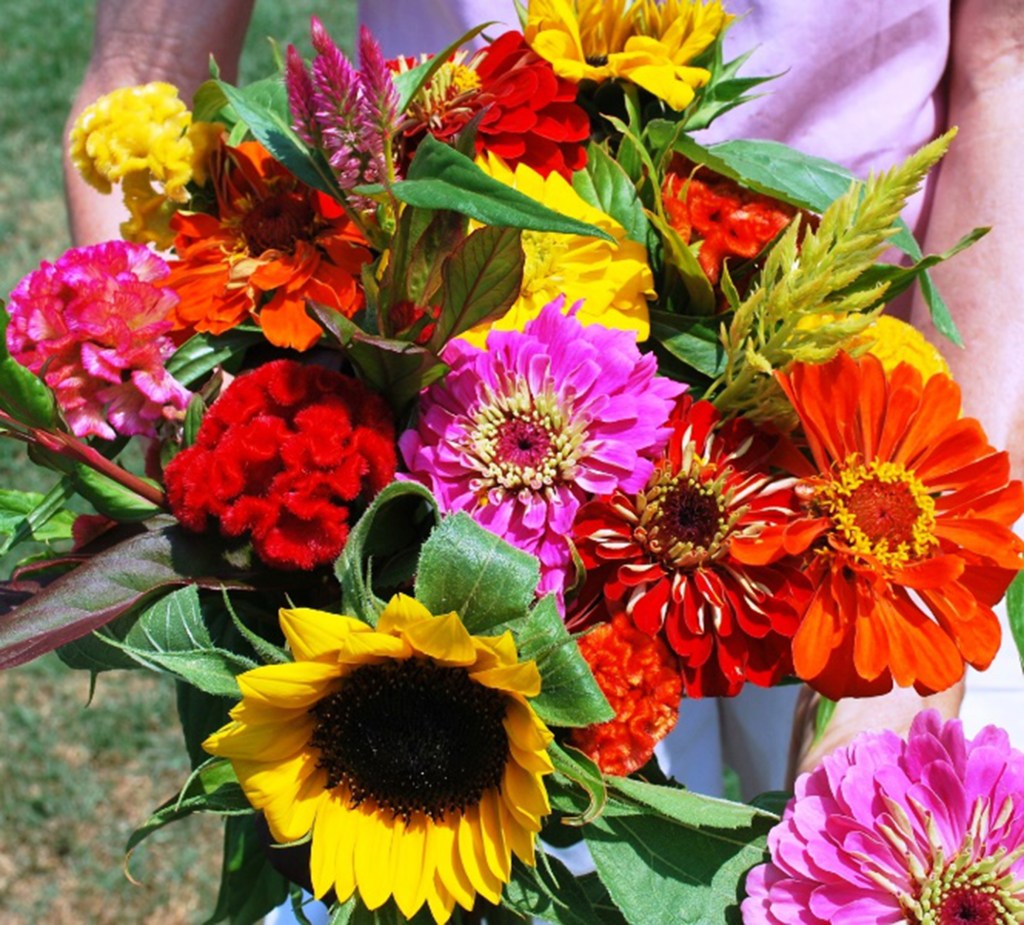ONE GARDENER TO ANOTHER: Bright bouquets straight from the garden
Published 6:45 am Monday, March 11, 2019

- Cut flowers can be purchased at just about any supermarket as well as at florist shops, however, there is something so much more personal when the flowers come from one’s own garden.
While living in Germany, I became very fond of some of the country’s traditions and customs.
Oktoberfest, a part of German culture since the year 1810, is probably the most commonly known German tradition and is often replicated here in the States. Other lesser-known traditions, however, are what make the German culture charming.
I had a small gathering at my home and invited a few of my husband’s German workmates. As I greeted them at the door, I was gifted a beautiful bouquet of mixed cut flowers from one and a small bouquet of tea roses from another.
I later found out it is customary for guests to present the hostess with flowers or chocolates when invited to their home. It is my favorite custom, and I often will bring flowers to a hostess who has invited me to their home for the first time.
Cut flowers can be purchased at just about any supermarket as well as at florist shops. However, there is something so much more personal when the flowers come from one’s own garden. Planting a cutting garden not only will provide beauty in the garden but will keep a vase in your home filled with cheery bouquets.
Gladiolus placed in a tall vase or the center of a bouquet make for a striking display. Depending on the variety, they can reach a height of 2 to 5 feet. Plant after the threat of severe frost has passed in a spot that receives at least five hours of sun daily.
Gladioli bloom from late June until first frost. However, they do not bloom continuously. Spreading out planting over the course of several weeks will extend the blooming season. Gladiolus bulbs should be covered with a thick layer of mulch during winter or dug up at the end of the season and stored in a cool, dry place.
Black-eyed Susan is a sunny perennial plant with yellow petals and a dark center eye. They will bloom all summer long and each plant can produce up to 20 flowers. As the plant grows, it will spread to form a large clump that can be divided in early fall for more blooms the following season.
Purple coneflower is a perennial plant native to the eastern U.S., putting out petals in shades of purple with a brownish center on sturdy stalks that can reach 5 feet in height. This plant blooms all summer and is drought-tolerant as well as being resistant to pests and disease.
Celosia is a heat-tolerant annual that produces vibrant blooms with captivating forms and textures. Plumosa varieties produce flame-like blooms, whereas cristata varieties produce wavy, brain-like blooms commonly called cockscomb. The spicata variety of celosia produces slender flower spikes that resemble wheat.
Globe Amaranth is a prolific annual bloomer that produces pom-pom like flowers right up until frost. They are sun-lovers that are resistant to deer and drought, making them a favorite as container plants. Seeds can be started indoors 6 to 8 weeks before the last expected frost or purchased plants can be put in the ground right after the last frost. These low-maintenance lovelies bloom in shades of red, pink, purple and white.
Feverfew, or Bachelor’s Button, has been grown in medicinal gardens for centuries. It is a perennial plant that can easily be started from seed either indoors or directly in the garden. This bush-like plant produces daisy-like flowers that have white petals with a sunny yellow center and grows to about 20 inches in height.
Zinnias are a staple in the cutting garden. They are a quick-growing annual that bursts forth loads of blooms in a wide array of single-color and multicolored flowers. The seeds can be sewn directly into the ground after the last frost has passed. They are a full-sun plant that appreciates humus rich, well-drained soil.
Cutting gardens bring lots of color, butterflies, birds and fresh, plentiful bouquets to brighten tabletops or a friend’s day. Until next week, happy gardening.
— Irland, a member of the Limestone County Master Gardeners, can be reached at kippirland@hotmail.com. For more information on the Limestone County Master Gardeners, visit http://mg.aces.edu/limestone.





